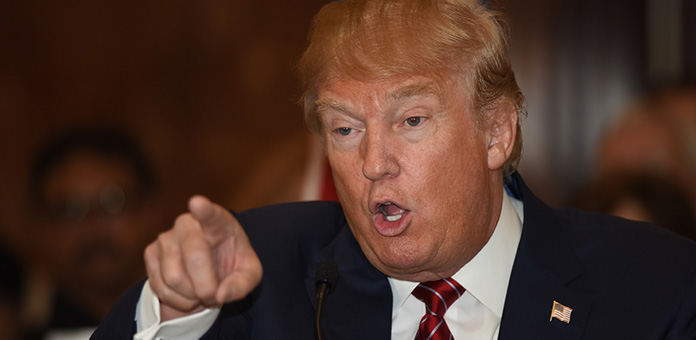 President Donald Trump indicated the national debt might be overestimated in official numbers, blaming fraud for the potentially inflated number. The comments come as the Department of Government Efficiency (DOGE), led by Elon Musk, sinks its cost-cutting teeth deeper into Treasury payment records. Trump suggested these audits could reveal some inconsistencies, possibly lowering the real debt figure. This could significantly shift debt repayment calculations and put the country on a healthier financial path.
President Donald Trump indicated the national debt might be overestimated in official numbers, blaming fraud for the potentially inflated number. The comments come as the Department of Government Efficiency (DOGE), led by Elon Musk, sinks its cost-cutting teeth deeper into Treasury payment records. Trump suggested these audits could reveal some inconsistencies, possibly lowering the real debt figure. This could significantly shift debt repayment calculations and put the country on a healthier financial path.
What did Trump say, exactly?
En route to the Super Bowl last week, Trump covered a broad spectrum of topics with reports onboard Air Force One. When discussing DOGE’s recent actions, Trump said his auditing team is “looking at Treasuries” and that the investigation could reveal “an interesting problem.” Most notably, he shared, “It could be that a lot of those things don’t count…that some of that stuff that we’re finding is very fraudulent, therefore maybe we have less debt than we thought.”
There’s confusion over what specific payments Trump referred to, but the comments stirred up curiosity as federal fiscal responsibility comes under the microscope. If correct, these claims could take two possible forms:
- Reducing Federal Expenses—Finding and eliminating fraud in federal expenses, such as contractor overbilling, improper claims in entitlement programs, or misuse of government grants and subsidies, could minimize the federal deficit by reducing spending and limiting future borrowing. Over time, this could chip away at the debt.
- Invalidating Debt—Another potential but less likely outcome of the audit is the discovery of illegitimate debt. If proven fraudulent or mistakenly issued, this would reduce debt upon recension. The potential withdrawal of already-issued debt could wreak havoc on the country’s creditworthiness, international trust, and economic stability.
The State of US Debt
The national debt towers at $36.4 trillion and grows at a pace of $1 trillion every 100 days. The government spends nearly $1 trillion annually to service the debt, a financial burden that’s eclipsed defense spending. Currently, the debt-to-GDP ratio is over 123%, far beyond sustainable levels. At the current rate of accumulation and without significant repayment, the debt could reach $52 trillion by 2035. Even if Trump’s deep dive into federal expenses were to uncover some potential debt discrepancies, it’s unlikely to address the systemic issues of contributing to the debt burden.
Our government is functioning on the theory that the more debt we have, the better it is.– Eric Sepanek, Scottsdale Bullion & Coin Founder
DOGE vs. Debt
On his first day in office, Trump sicced the newly formed DOGE on bloated bureaucracy and government inefficiency, intending to stop the bleeding budget. Out of the gate, Musk claimed the organization could slash the federal budget, which fell into a $1.8 trillion deficit last year, by $1 trillion.
Thus far, the billionaire mastermind and his young entourage claimed to have identified and cut $1 billion in spending in the first three weeks. Furthermore, the group indicates the federal government is on track to save $1 billion per day by stopping unnecessary hiring or foreign funding. At the same time, DOGE has more than doubled its budget from $6.5 to $14.4 million.
If DOGE succeeds in slashing $1 trillion from the federal budget, it would considerably slow the pace of US debt accumulation. A minimized deficit results in less borrowing, alleviating the yearly increase in national debt. This would further relieve the financial burden of service payments.
The temporary department is slated to end on July 4, 2026, giving Musk a little more than a year to reach this milestone. The swift pace and scale of waste uncovered are promising, but legal hurdles and bureaucratic resistance raise doubts about whether DOGE is a lasting fix or just a temporary shake-up.


